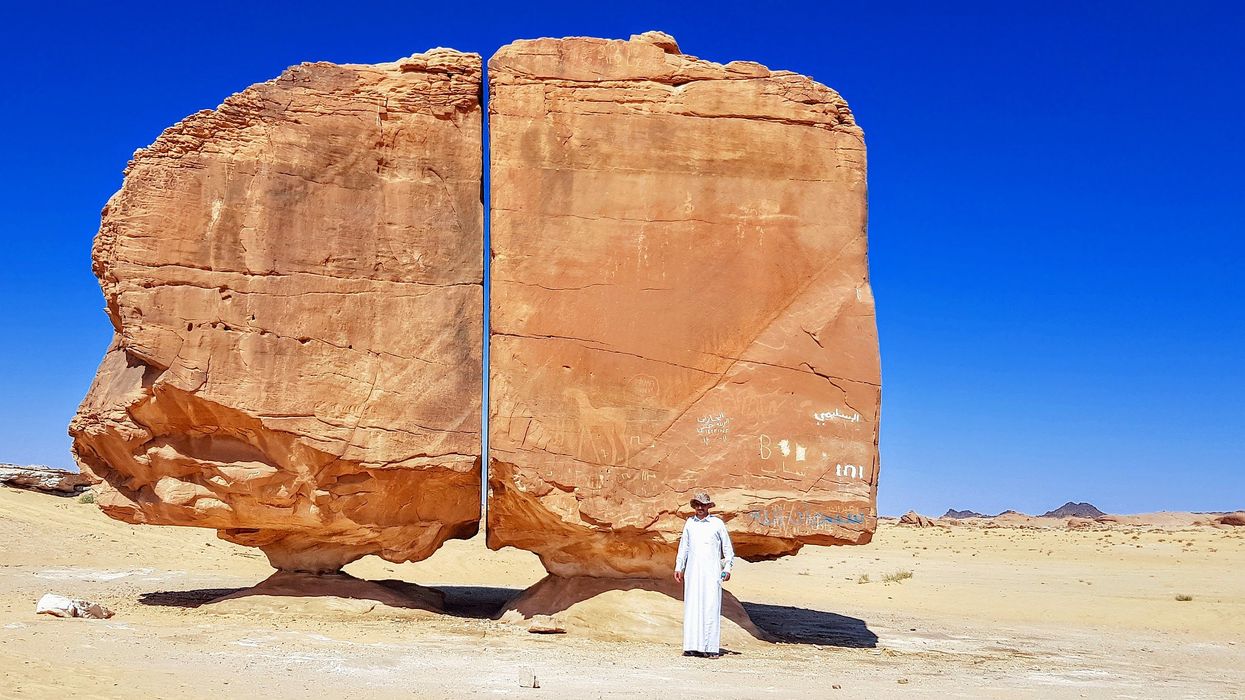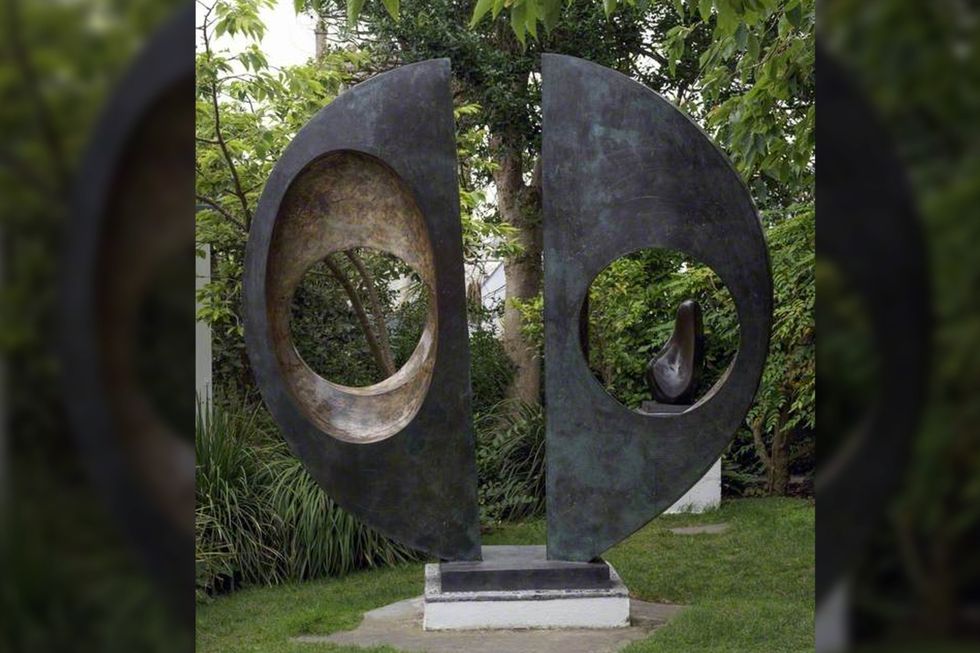Harriet Brewis
Dec 20, 2023

The stunning rock formation is split almost perfectly in half by an almost perfectly straight line
(Disdero via Wikimedia Commons)
With all the advancements in science and technology, it’s important to remind ourselves that we don’t know – and probably can’t know – the answers to everything.
Luckily, Mother Nature’s always on hand to pull us back down to earth, reminding us that the world remains a treasure-trove of mysteries.
One example of this is the Al Naslaa Rock formation, located in the Tamya Oasis, Saudia Arabia, which has been cleaved clean down the middle in an almost perfectly straight line.
For decades, centuries or even millennia, people have puzzled over what split the giant boulder in two. Could it have been caused by plate tectonics? What about sand erosion? Or maybe, just maybe, could aliens have sliced through it with a giant laser beam?
Suffice it to say, theories with varying degrees of credibility have abounded since the 6m (20 feet)-tall apparition was described by Western explorers 1877.

Of course, the sandstone rock itself is far older this, believed to date back thousands of years, as are the illustrations etched into its surface.
That’s right, Al Naslaa is a petroglyph, meaning a rock carving, and this one is inscribed with depictions of hunting scenes featuring Arabian horses and ibexes (wild goats).
Some people believe this artwork is evidence that the divided rocks, which sit upon two pedestals, were not formed by natural forces alone.
However, most experts agree that some form of weathering process is likely responsible for their jaw-dropping form. Here are the four most widely accepted hypotheses:
1. Natural Geological Processes
Given that the rock is made of sandstone, which is known for its layering, a combination of factors including erosion and weathering might have caused stress fractures, as the website Geology Science notes.
This could have resulted in the eventual splitting of the rock along its natural fault lines, which ultimately caused it to break in half.

2. Wind, rain and temperature changes
Variations in weather conditions and temperatures can contribute to the wearing down of materials. For example, wind-blown sand could have passed through what started as small uneven cracks in the stone, rubbing away at them over thousands of years to create a smooth, straight line.
Similarly, freeze-thaw weathering may also have caused the crack if water managed to infiltrate a small fracture in the then-connected rock. This water could have subsequently frozen, causing it to expand and amplify the fissure, IFLSciencesuggests.
Once this ancient cool period had come to an end, the ice would have thawed and melted, leaving behind the stunning straight cleft we see today.
3. Tectonic Activity
Some geologists point out the Tayma Oasis region has been known to experience tectonic activity. It is therefore possible that movements in the Earth’s crust and the forces of compression and tension at one point caused the weakest part of the rock to split.
4. Human or alien activity
Naturally, any suggestion of alien interference here isn’t paid much heed, but there is at least something of a case to be made for human involvement.
Given that it is made of sandstone, simple tools would have been capable of chiseling the rock down its centre. The question is, why would anyone go to the effort of doing that?
Well, ancient civilisations may feasibly have sculpted it to mark a site of religious significance, a geographical landmark, or simply as a really, really early precursor to the likes of Barbara Hepworth.

So will we ever find a definitive answer to what formed the Al Naslaa Rock Formation?
Probably not, but it’s a question worth chiselling away at anyway.
Isn’t Mother Nature fun?
Sign up for our free Indy100 weekly newsletter
Have your say in our news democracy. Click the upvote icon at the top of the page to help raise this article through the indy100 rankings
Top 100
The Conversation (0)













